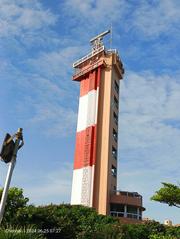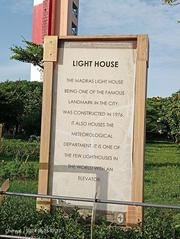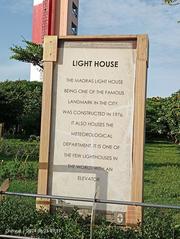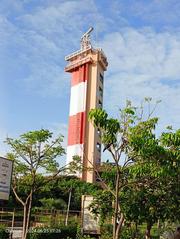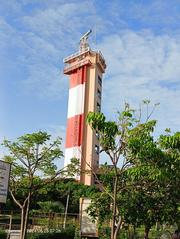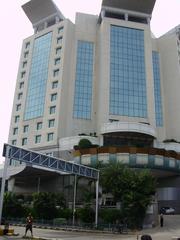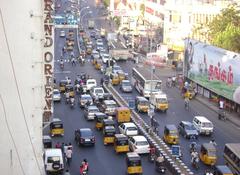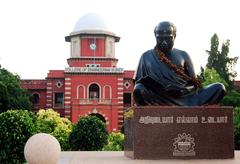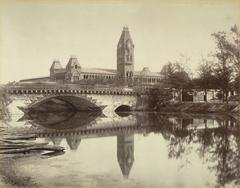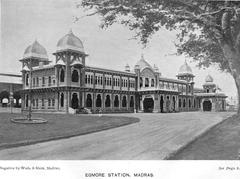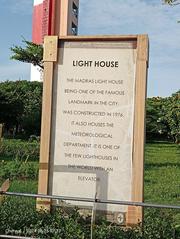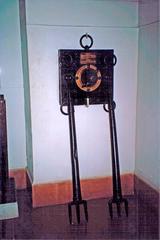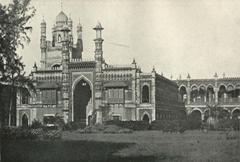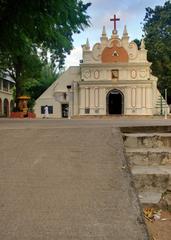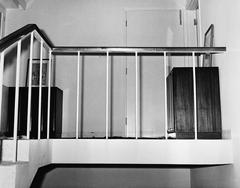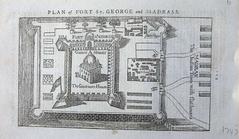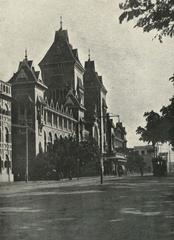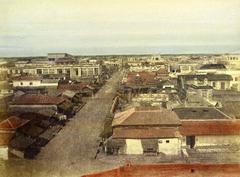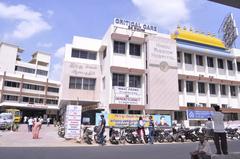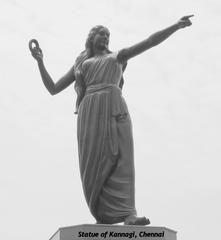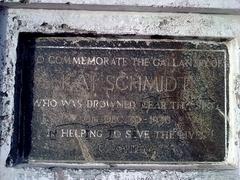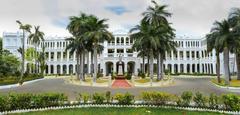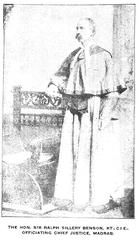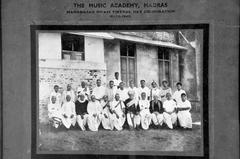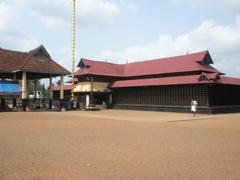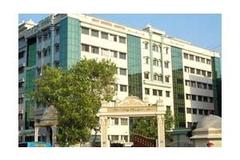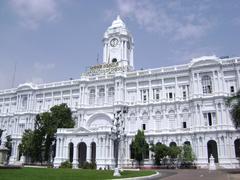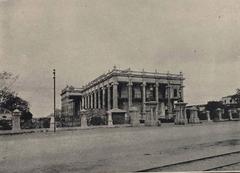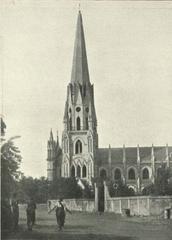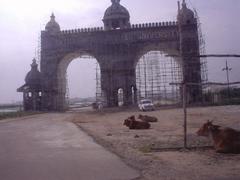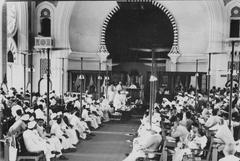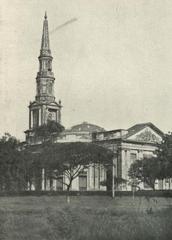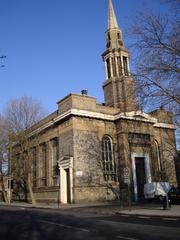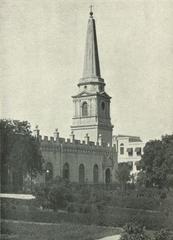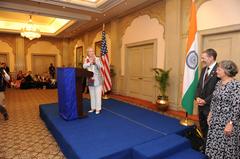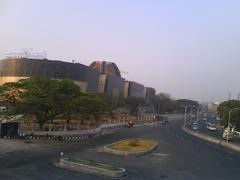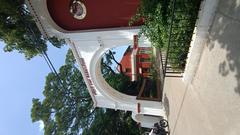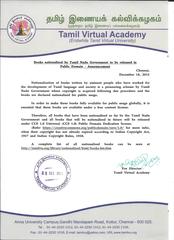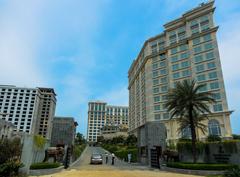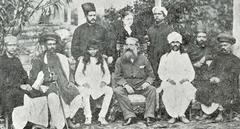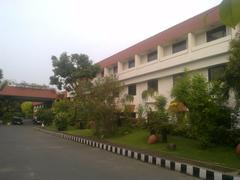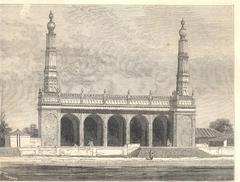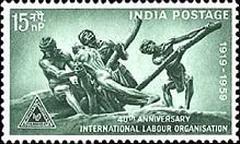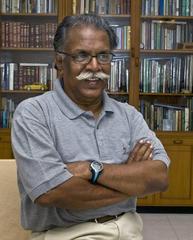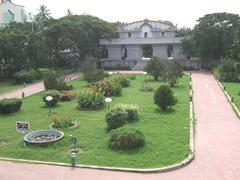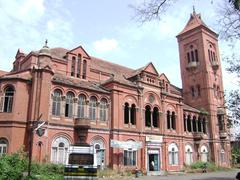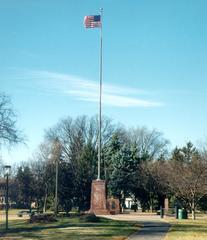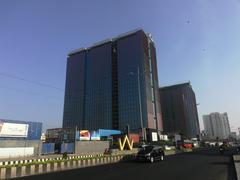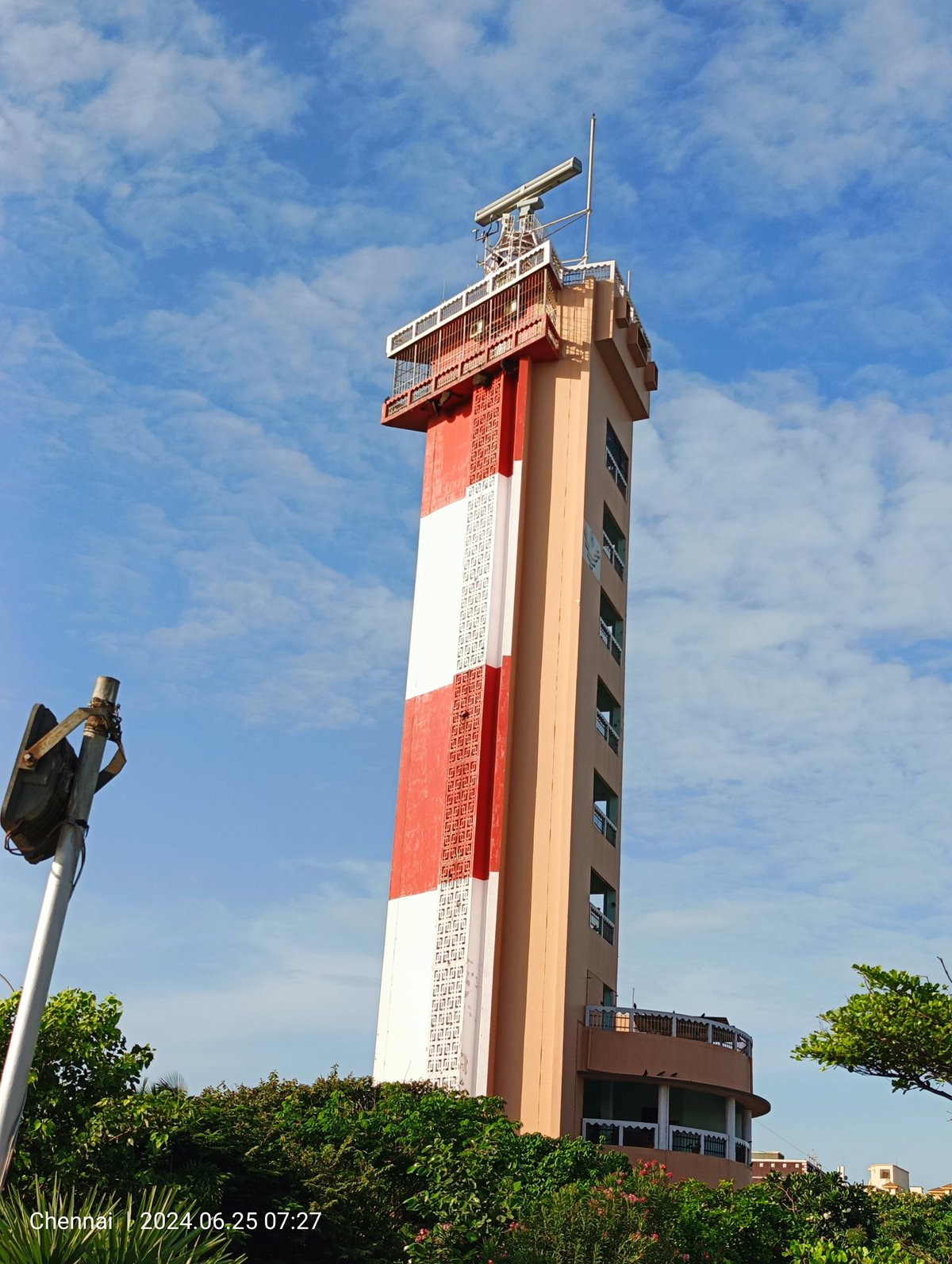
Kamarajar Salai, Chennai: Visiting Hours, Tickets, and Historical Significance
Published Date: 17/07/2024
Discover Kamarajar Salai: An Introduction
Kamarajar Salai, formerly known as South Beach Road, is a significant arterial road in Chennai, India, offering a unique blend of historical, cultural, and recreational experiences. Running parallel to Marina Beach, one of the world’s longest urban beaches, Kamarajar Salai serves as a testament to Chennai’s rich colonial past and its dynamic post-independence transformation. This road, renamed in honor of K. Kamaraj, a key figure in Tamil Nadu’s political history, reflects the vibrant political, social, and cultural fabric of the city (Exploring Kamarajar Salai).
During the British colonial era, South Beach Road was developed to connect key parts of Chennai, including the strategic Fort St. George. Post-independence, the road was renamed to celebrate K. Kamaraj’s contributions to education and infrastructure in the state. Today, Kamarajar Salai is home to iconic landmarks such as the University of Madras, the Vivekananda House, and the All India Radio (AIR) Chennai station. It also serves as a hub for political activities and social movements, with Marina Beach being a notable venue for public gatherings (Vivekananda House).
Kamarajar Salai’s significance extends beyond its historical and political relevance. It is a cultural and recreational hotspot, with Marina Beach offering a picturesque setting for leisure activities. The road’s proximity to key attractions like the Santhome Basilica and Kapaleeshwarar Temple makes it a must-visit for tourists. This guide provides a comprehensive overview of Kamarajar Salai’s historical significance, visitor information, travel tips, and nearby attractions, ensuring a well-rounded exploration of this iconic Chennai landmark (AIR Chennai).
Table of Contents
- Exploring Kamarajar Salai - History, Significance, and Visitor Information
- Summary and Key Takeaways
- Sources and Further Reading
Exploring Kamarajar Salai - History, Significance, and Visitor Information
Early History and Establishment
Kamarajar Salai, formerly known as South Beach Road, is a prominent arterial road in Chennai, India. The road runs along Marina Beach, one of the longest urban beaches in the world. The history of Kamarajar Salai is deeply intertwined with the colonial past of Chennai, which was known as Madras during the British era. The road was initially developed during the late 19th century as part of the urban planning efforts by the British to enhance the city’s infrastructure and connectivity.
Colonial Era Developments
During the British colonial period, South Beach Road was a significant thoroughfare that connected various parts of the city. The road was strategically important for the British administration as it facilitated easy access to Fort St. George, the administrative headquarters of the British East India Company. The development of the road was part of a broader initiative to modernize the city’s infrastructure, which included the construction of public buildings, parks, and other amenities.
Post-Independence Transformation
After India gained independence in 1947, South Beach Road was renamed Kamarajar Salai in honor of K. Kamaraj, a prominent Indian politician and former Chief Minister of Tamil Nadu. Kamaraj was known for his contributions to the development of the state, particularly in the fields of education and infrastructure. The renaming of the road was a tribute to his legacy and a reflection of the changing political landscape of the country.
Architectural and Cultural Significance
Kamarajar Salai is home to several iconic landmarks and institutions that reflect the rich architectural and cultural heritage of Chennai. One of the most notable structures along the road is the University of Madras, established in 1857. The university’s Senate House, designed by the renowned architect Robert Chisholm, is an architectural marvel that combines Indo-Saracenic and Byzantine styles. The building is a testament to the city’s colonial past and its enduring legacy in the field of education (Madras University).
Another significant landmark is the Vivekananda House, also known as the Ice House. This historic building, constructed in the 1840s, was originally used to store ice imported from the United States. In 1897, Swami Vivekananda stayed at the house during his visit to Chennai, and it has since been converted into a museum dedicated to his life and teachings (Vivekananda House).
Political and Social Movements
Kamarajar Salai has also been a focal point for various political and social movements in Chennai. The road’s proximity to Marina Beach has made it a popular venue for public gatherings, protests, and demonstrations. One of the most significant events in recent history was the Jallikattu protests in January 2017, where thousands of people gathered on Marina Beach to demand the lifting of the ban on the traditional bull-taming sport of Jallikattu (Jallikattu Protests).
Modern Developments and Infrastructure
In recent years, Kamarajar Salai has undergone several infrastructural developments to accommodate the growing traffic and enhance the overall urban experience. The road has been widened, and several flyovers and pedestrian crossings have been constructed to improve connectivity and safety. The Chennai Corporation has also undertaken beautification projects along the road, including the installation of streetlights, landscaping, and the development of public spaces.
Educational and Research Institutions
Kamarajar Salai is also home to several prestigious educational and research institutions. The Presidency College, established in 1840, is one of the oldest and most esteemed colleges in India. The college has produced several notable alumni, including former Indian President Dr. S. Radhakrishnan and Nobel laureate C. V. Raman (Presidency College).
The road also houses the All India Radio (AIR) Chennai station, which has been a significant medium for broadcasting news, music, and cultural programs since its inception in 1938. The station has played a crucial role in the dissemination of information and the promotion of regional culture and arts (AIR Chennai).
Cultural and Recreational Spaces
Kamarajar Salai is not just a road; it is a cultural and recreational hub that offers a variety of experiences for locals and tourists alike. The Marina Beach, which runs parallel to the road, is a popular destination for morning walks, jogging, and leisure activities. The beach is also home to several statues and memorials, including the statues of Mahatma Gandhi, Subhas Chandra Bose, and the Victory War Memorial, which commemorate the contributions of these leaders to India’s freedom struggle (Marina Beach).
The road also features the Anna Memorial and the MGR Memorial, dedicated to former Chief Ministers C. N. Annadurai and M. G. Ramachandran, respectively. These memorials are significant landmarks that attract thousands of visitors each year and serve as a reminder of the political history and legacy of Tamil Nadu (Anna Memorial, MGR Memorial).
Visitor Information
Visiting Hours and Tickets
Kamarajar Salai itself is accessible 24/7, but specific landmarks along the road have their own visiting hours and ticket requirements. For example, the Vivekananda House is open from 10:00 AM to 6:30 PM on all days except Mondays. The University of Madras and other educational institutions may have restricted access, so it is advisable to check their visiting hours in advance.
Travel Tips
- Best Time to Visit: The best time to explore Kamarajar Salai and Marina Beach is during the early morning or late evening when the temperatures are cooler.
- Accessibility: The road is well-connected by public transportation. Visitors can take buses, taxis, or auto-rickshaws from various parts of Chennai to reach Kamarajar Salai. Pedestrian walkways are also available for those who prefer to walk.
Nearby Attractions
- Santhome Basilica: A historic church located near Marina Beach, known for its stunning architecture.
- Kapaleeshwarar Temple: A famous temple dedicated to Lord Shiva, located in Mylapore, a short drive from Kamarajar Salai.
- Fort St. George: The first English fortress in India, which now houses a museum and the Tamil Nadu legislative assembly.
FAQs
What is the significance of Kamarajar Salai?
Kamarajar Salai is a historically and culturally significant road in Chennai, known for its colonial past, architectural landmarks, and role in political and social movements.
Are there any ticket prices for visiting landmarks on Kamarajar Salai?
While Kamarajar Salai itself is free to access, specific landmarks like the Vivekananda House may have an entry fee. It is advisable to check the official websites for the most up-to-date information.
What are the best times to visit Kamarajar Salai?
Early mornings and late evenings are the best times to visit Kamarajar Salai and Marina Beach to avoid the heat and enjoy a pleasant experience.
Conclusion
The history of Kamarajar Salai is a reflection of the broader historical, political, and cultural developments in Chennai. From its colonial origins to its modern-day significance, the road has evolved to become a vital part of the city’s urban fabric. Its rich history, architectural landmarks, and cultural significance make it a must-visit destination for anyone looking to explore the heritage and vibrancy of Chennai. For more updates and travel tips, download our mobile app Audiala and follow us on social media.
Summary and Key Takeaways
Kamarajar Salai stands as a symbol of Chennai’s historical, cultural, and political heritage. From its colonial origins as South Beach Road to its post-independence transformation, the road encapsulates the city’s journey through time. The renaming of the road in honor of K. Kamaraj reflects the significant contributions of this prominent leader to the development of Tamil Nadu, particularly in the fields of education and infrastructure (Exploring Kamarajar Salai).
Today, Kamarajar Salai is more than just a road; it is a vibrant artery of Chennai that connects the past with the present. It is home to architectural marvels like the University of Madras Senate House and cultural treasures like the Vivekananda House. The road also serves as a focal point for political and social movements, underlining its ongoing relevance in contemporary civic life. The modern infrastructural developments and beautification projects have enhanced its appeal, making it a pleasant experience for visitors and locals alike (Discovering Kamarajar Salai).
For those planning to visit, Kamarajar Salai offers a multitude of experiences, from leisurely walks along Marina Beach to exploring nearby historical and cultural landmarks. This guide aims to provide all the necessary information to ensure a memorable visit to this iconic part of Chennai. Whether you are a history buff, a cultural enthusiast, or simply looking to enjoy the scenic beauty of Marina Beach, Kamarajar Salai has something to offer for everyone (Essential Visitor Tips for Kamarajar Salai).
Sources and Further Reading
- Exploring Kamarajar Salai - History, Significance, and Visitor Information: Madras University
- Discovering Kamarajar Salai - Visiting Hours, Tickets, and Historical Significance in Chennai: Vivekananda House
- Essential Visitor Tips for Kamarajar Salai, Chennai - Best Time to Visit, Tickets, and Top Attractions: AIR Chennai
- Exploring Kamarajar Salai - History, Significance, and Visitor Information: Jallikattu Protests
- Exploring Kamarajar Salai - History, Significance, and Visitor Information: Marina Beach
- Exploring Kamarajar Salai - History, Significance, and Visitor Information: Anna Memorial
